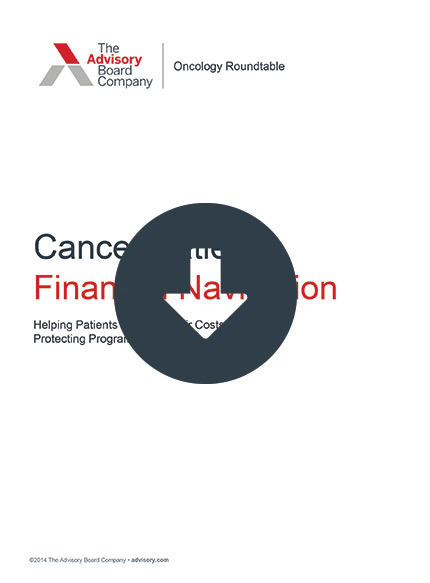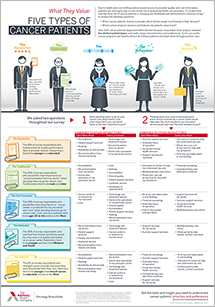Auto logout in seconds.
Continue LogoutAfter receiving feedback from a caregiver, Johns Hopkins Hospital created an urgent care center specifically for cancer patients, Meredith Cohn writes for the Baltimore Sun.
According to Advisory Board research, more than half of Medicare patients receiving chemotherapy visit the ED annually, and two-thirds of those visits result in hospitalization. Pain is the top reason cancer patients go to the ED.
But ED physicians often aren't well-equipped to address cancer patients' pain. And the stress of the emergency department can be "an assault on your well-being" and increase patients' risk of developing an infection, said Richard Dean, whose wife went to the ED many times after her ovarian cancer diagnosis.
It was Dean who suggested Johns Hopkins invest in an urgent care center for cancer patients.
Dean, an adjunct professor of engineering at Morgan State University, crunched some numbers to recommend the number of beds and staff Hopkins would need. Hospital administrators were convinced: In 2014, Johns Hopkins opened an urgent care center specifically for cancer patients. It's open 12 hours a day during the week and will be open on Saturdays starting next March.
Patients who have difficulty managing their symptoms first call the center's hotline. Nurses try to help them over the phone; if they cannot, patients are instructed to come into the center. The center currently sees about 10 patients a day.
"We knew sending our patients to the [ED] was not in their best interests," said Sharon Krumm, director of nursing administration at the Johns Hopkins Kimmel Cancer Center. "If they have a heart problem or a stroke, yes, it's a good place for them, but that's not what was happening."
Since the urgent cancer care center opened at Hopkins, the average number of hospitalizations among a group of cancer patients dropped by 50 percent.
Other centers
A handful of other urgent care centers specifically for cancer patients have cropped up nationwide. The University of Texas Southwestern Medical Center opened up a cancer urgent care center when providers realized the ED was not fully prepared to treat chemotherapy patients' sores, fevers, dehydration, and nausea.
The center enables patients to receive care from physician assistants who are more familiar with chemotherapy side effects and who often contact the patient's oncologist for further details and instructions. If a patient needs to be hospitalized, he or she can bypass the ED and be admitted straight from the cancer urgent care center.
Thomas Froehlich, medical director of the center's cancer clinics, said, "We decided to do this to provide better care. It results in lower costs, but really it's about better care, keeping patients at home and not in the hospitals. No one wants to be in the hospital" (Minemyer, FierceHealthcare, 11/28; Cohn, Baltimore Sun, 11/25).
What they value: Five types of cancer patients
Cancer patients have more choices for their care than ever before. To attract patients in this fiercely competitive landscape, you must invest your limited resources in the right services—ones that will earn patients' trust and improve their experience.
Oncology Roundtable's analysis of our 2015 Cancer Patient Experience Survey revealed five distinct patient types—each with unique characteristics and preferences for their care. Our infographic is your guide to understanding the five types of patients and what they value in a cancer provider.
Don't miss out on the latest Advisory Board insights
Create your free account to access 1 resource, including the latest research and webinars.
Want access without creating an account?
You have 1 free members-only resource remaining this month.
1 free members-only resources remaining
1 free members-only resources remaining
You've reached your limit of free insights
Become a member to access all of Advisory Board's resources, events, and experts
Never miss out on the latest innovative health care content tailored to you.
Benefits include:
You've reached your limit of free insights
Become a member to access all of Advisory Board's resources, events, and experts
Never miss out on the latest innovative health care content tailored to you.
Benefits include:
This content is available through your Curated Research partnership with Advisory Board. Click on ‘view this resource’ to read the full piece
Email ask@advisory.com to learn more
Click on ‘Become a Member’ to learn about the benefits of a Full-Access partnership with Advisory Board
Never miss out on the latest innovative health care content tailored to you.
Benefits Include:
This is for members only. Learn more.
Click on ‘Become a Member’ to learn about the benefits of a Full-Access partnership with Advisory Board
Never miss out on the latest innovative health care content tailored to you.


